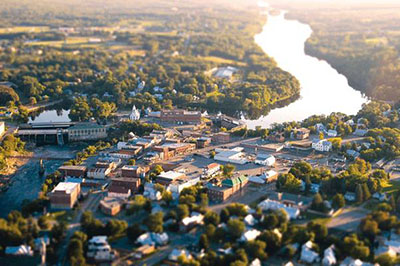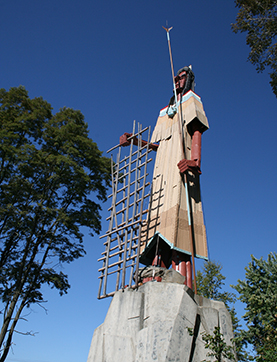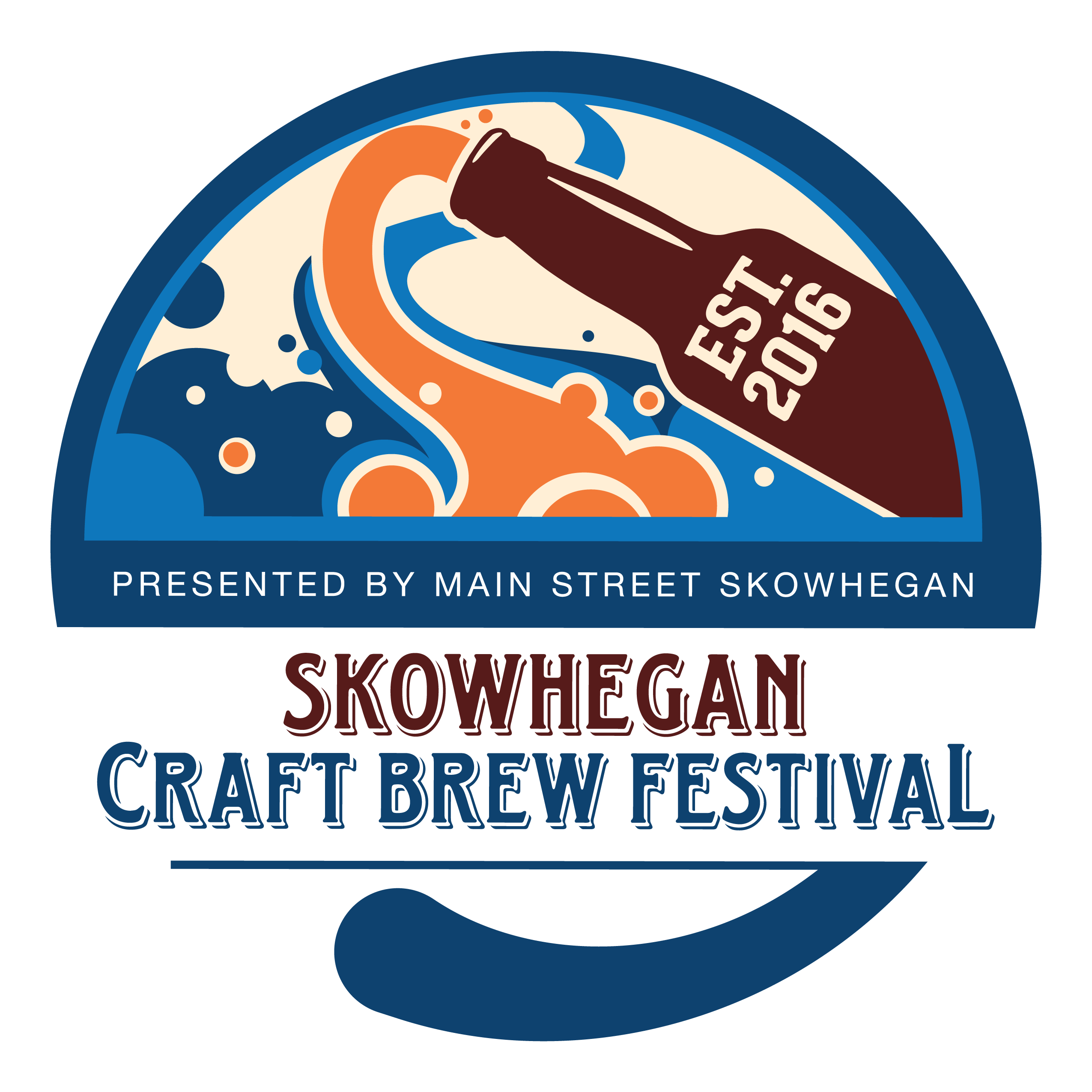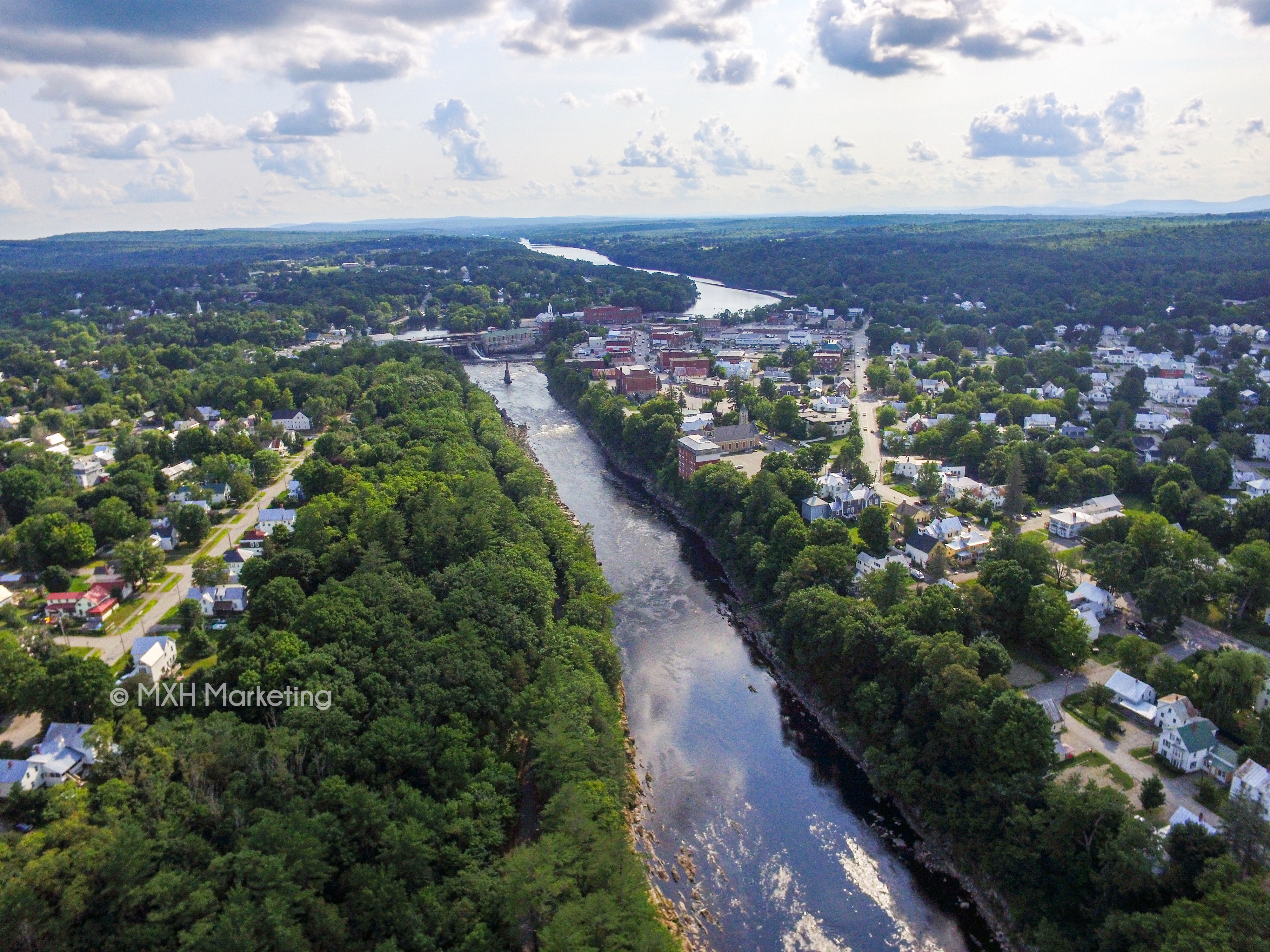Nestled in the scenic Kennebec River Valley, Skowhegan is an up-and-coming town with a vibrant history—from the Native Americans who were the original inhabitants, to the 19th- and 20th-century river drivers who annually drove logs down the Kennebec, to the evolving community of makers, doers, and innovators who, like those before them, genuinely love life in Central Maine.
 Settled in 1773 and traversed by Benedict Arnold in 1775, Skowhegan today continues to be a crossroads as well as a county seat and the gateway to the Maine woods. Skowhegan is nationally known as the home of Margaret Chase Smith, the first woman to serve in both houses of the U.S. Congress and the first woman to be placed in nomination for President of the United States at a major party's convention. Skowhegan is also the home of the Skowhegan State Fair, the nation’s oldest consecutively running agricultural fair.
Settled in 1773 and traversed by Benedict Arnold in 1775, Skowhegan today continues to be a crossroads as well as a county seat and the gateway to the Maine woods. Skowhegan is nationally known as the home of Margaret Chase Smith, the first woman to serve in both houses of the U.S. Congress and the first woman to be placed in nomination for President of the United States at a major party's convention. Skowhegan is also the home of the Skowhegan State Fair, the nation’s oldest consecutively running agricultural fair.
 Downtown Skowhegan is watched over by the world’s tallest Native American, a 62-foot wooden sculpture crafted by renowned Maine artist Bernard Langlais and “dedicated to the Maine Indians, the first people to use these lands in peaceful ways.” A destination on the Langlais Art Trail, Skowhegan hosts 25 smaller Langlais artworks as well.
Downtown Skowhegan is watched over by the world’s tallest Native American, a 62-foot wooden sculpture crafted by renowned Maine artist Bernard Langlais and “dedicated to the Maine Indians, the first people to use these lands in peaceful ways.” A destination on the Langlais Art Trail, Skowhegan hosts 25 smaller Langlais artworks as well.
Skowhegan’s development remains centered around the river gorge. After the final log drive, in 1976, some river drivers turned to whitewater rafting to continue their way of life on the river. Now, 40 years later, Skowhegan annually hosts River Fest to celebrate recreation and life on the Kennebec, and the town’s future plans include the creation of the Skowhegan River Park in and around the gorge.
Add to that recent achievements such as the conversion of a former county jail into the Somerset Grist Mill, the development of the Debe Park River Walk and Philbrick Trails, and new events to complement old traditions—and it’s easy to see that Skowhegan is a place to watch.

